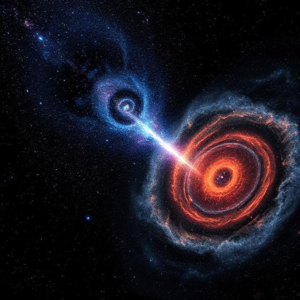1. What is Particle Physics?
Particle physics is the study of the most basic building blocks of matter and the forces that interact with them. It’s like trying to figure out what everything in the universe is made of at the tiniest level.

2. What are Elementary Particles?
Elementary particles are the smallest, most fundamental pieces of matter. They are the building blocks of everything.
In simple terms:
- Imagine you have a Lego set. The individual Lego pieces are like elementary particles. You can’t break them down further, just like elementary particles can’t be broken into smaller components.
There are two main types of elementary particles:
- Fermions: These make up matter (like electrons, protons, and neutrons).
- Bosons: These are particles that carry forces (like photons, which carry light, or the Higgs boson, which gives particles mass).
Examples of elementary particles:
- Electrons: Tiny particles that orbit the nucleus of an atom.
- Quarks: Found inside protons and neutrons. There are 6 types of quarks: up, down, charm, strange, top, and bottom.
- Neutrinos: Very tiny particles with no charge and very little mass.
3. What are Conservation Laws?
Conservation laws are rules in physics that say certain properties of a system remain constant over time, even though the system may change or interact with other things.
Some important conservation laws in particle physics:
a) Conservation of Energy
- Energy cannot be created or destroyed, only transferred or transformed. In particle physics, this means the total energy before and after a reaction remains the same.
b) Conservation of Momentum
- The total momentum (mass × velocity) in a closed system remains constant. So if two particles collide, the momentum they had before the collision equals the momentum they have afterward.
c) Conservation of Charge
- The total electric charge in an isolated system remains the same. If one particle loses charge, another must gain an equal amount of charge. For example, an electron carries a negative charge, and a proton carries a positive charge. If they interact, the total charge before and after the interaction will remain the same.
d) Conservation of Lepton Number
- Leptons are particles like electrons and neutrinos. The number of leptons (and their antiparticles) in a reaction must stay the same. For instance, if an electron is created, a corresponding antiparticle (like a positron) must also be created to balance the lepton number.
e) Conservation of Baryon Number
- Baryons are particles like protons and neutrons. The number of baryons (and their antiparticles) remains the same in any interaction. So, if a proton is created, an antiproton must also be created to balance the baryon number.
4. The Fundamental Forces and Their Particles
There are four fundamental forces in nature, and they are carried by special particles (bosons):
- Gravity: The force of attraction between masses. It is carried by the hypothetical graviton.
- Electromagnetic Force: The force between charged particles (like electrons and protons). It’s carried by photons.
- Strong Force: This holds the nucleus of atoms together. It’s carried by gluons.
- Weak Force: Responsible for processes like radioactive decay. It’s carried by W and Z bosons.
5. Summary of Key Ideas
- Elementary particles are the most basic building blocks of matter.
- These particles are governed by conservation laws, which are rules that tell us certain quantities (like energy, charge, or momentum) must stay the same in any process.
- There are different types of particles and forces that make up the universe, and particle physicists use these laws to understand how everything works at the smallest scales.











